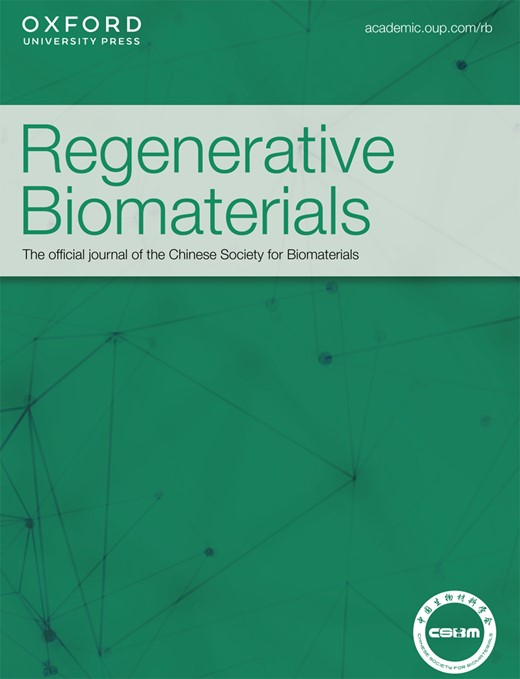基于阻断 AGEs 有害影响的综合治疗策略,加速糖尿病伤口愈合
IF 5.6
1区 医学
Q1 MATERIALS SCIENCE, BIOMATERIALS
引用次数: 0
摘要
糖尿病足溃疡是糖尿病的一种严重并发症。高级糖化终产物(AGEs)的过度积累是糖尿病伤口延迟愈合的关键致病因素之一。AGEs 的主要致病机制包括诱导细胞功能障碍、延长炎症反应、增加氧化应激和减少内源性一氧化氮(NO)的产生。据推测,阻断 AGEs 的有害影响和补充外源性一氧化氮的联合疗法可促进糖尿病伤口愈合。在这里,我们提出了纳米颗粒/水凝胶复合敷料,将罗格列酮和 S-亚硝基谷胱甘肽共同输送到伤口床。所设计的联合给药系统提高了成纤维细胞的存活率,降低了氧化应激水平,逆转了线粒体膜电位的变化,并减少了促炎细胞因子的表达。局部持续释放治疗药物能明显改善糖尿病大鼠的伤口愈合,包括提高伤口闭合率、缓解炎症、促进胶原纤维生成和血管生成。我们的研究结果表明,这种旨在抑制 AGEs 毒性效应的局部给药策略在糖尿病伤口治疗方面具有巨大的临床潜力。本文章由计算机程序翻译,如有差异,请以英文原文为准。
Combined therapeutic strategy based on blocking the deleterious effects of AGEs for accelerating diabetic wound healing
Diabetic foot ulcer is a serious complication of diabetes. Excessive accumulation of advanced glycation end products (AGEs) is one of the critical pathogenic factors in postponing diabetic wound healing. The main pathogenic mechanisms of AGEs include inducing cellular dysfunction, prolonging inflammatory response, increasing oxidative stress, and reducing endogenous nitric oxide (NO) production. Combination therapy of blocking the deleterious effects of AGEs and supplementing exogenous NO is hypothesized to promote diabetic wound healing. Here, we presented nanoparticles/hydrogel composite dressings to co-delivery rosiglitazone and S-nitroso glutathione into the wound bed. The designed co-delivery system augmented the survival of fibroblasts, reduced oxidative stress levels, reversed the change of mitochondrial membrane potential, and decreased the proinflammatory cytokine expression. Local sustained release of therapeutic agents significantly improved the wound healing of diabetic rats including increasing the wound closure rate, alleviating inflammation, promoting collagen fiber production and angiogenesis. Our finding indicated this local deliver strategy aimed at inhibiting the toxic effects of AGEs has great clinical potential for diabetic wound treatment.
求助全文
通过发布文献求助,成功后即可免费获取论文全文。
去求助
来源期刊

Regenerative Biomaterials
Materials Science-Biomaterials
CiteScore
7.90
自引率
16.40%
发文量
92
审稿时长
10 weeks
期刊介绍:
Regenerative Biomaterials is an international, interdisciplinary, peer-reviewed journal publishing the latest advances in biomaterials and regenerative medicine. The journal provides a forum for the publication of original research papers, reviews, clinical case reports, and commentaries on the topics relevant to the development of advanced regenerative biomaterials concerning novel regenerative technologies and therapeutic approaches for the regeneration and repair of damaged tissues and organs. The interactions of biomaterials with cells and tissue, especially with stem cells, will be of particular focus.
 求助内容:
求助内容: 应助结果提醒方式:
应助结果提醒方式:


